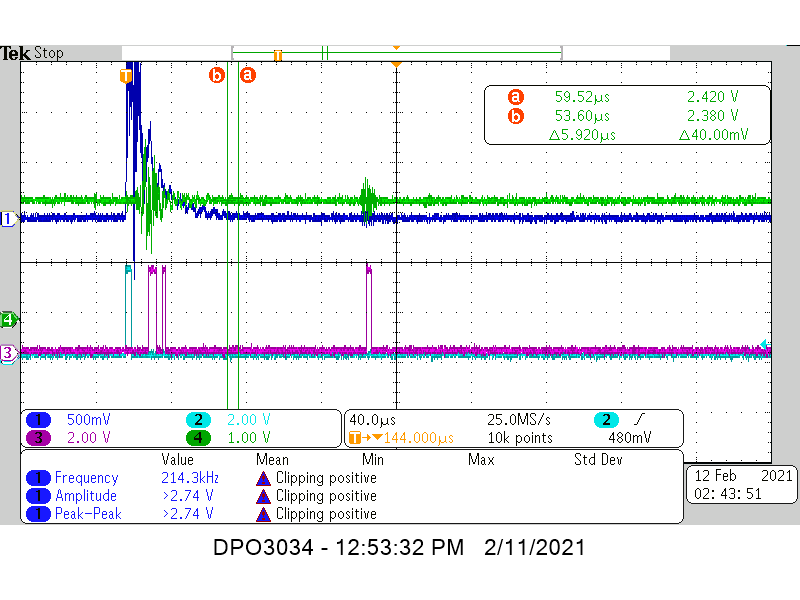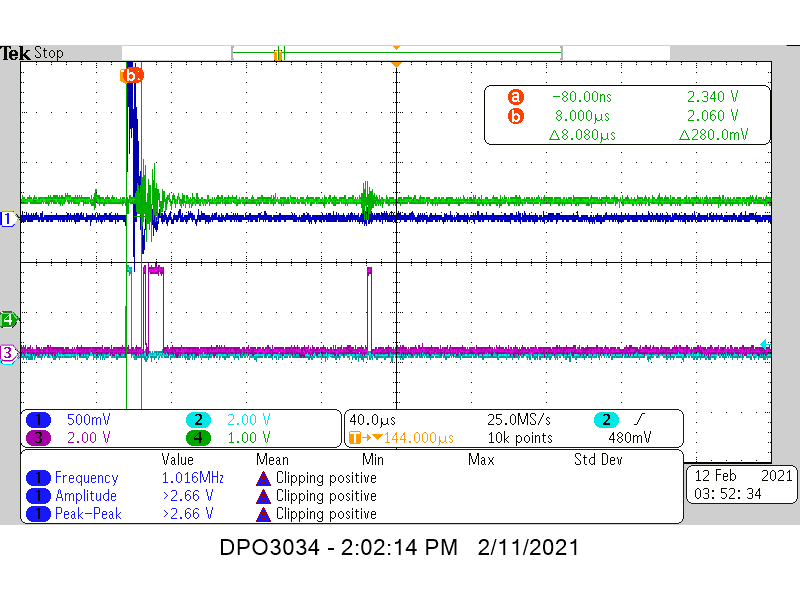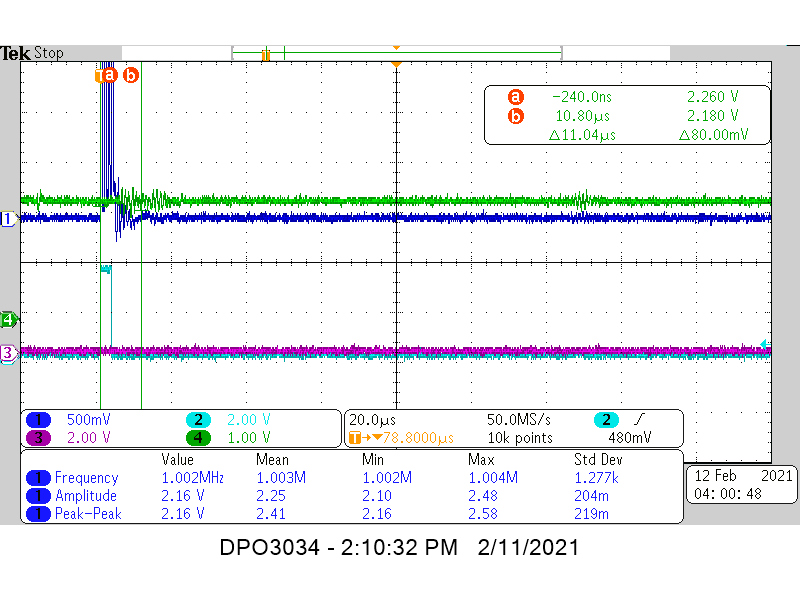SLDA058 March 2021 TUSS4470
- Trademarks
- 1Review of Ultrasonic Sensing Range Performance Factors
- 2Methods Overview
- 3Short Range Air-Coupled Test Results
- 4Mid-Range Air-Coupled Test Results
- 5Short Range Water-Coupled Test Results
- 6Resistive Damping Device Comparison
- 7Summary
- 8References
- A Appendix A
- B Appendix B
6.2 TDC1000
To show the effect of the damping resistor, TX (CH1), COMPIN (CH4), START (CH2), and STOP (CH3) are shown in three ToF level measurement plots using 10 kΩ, 1250Ω, and 150Ω damping. Without damping, a 16 μs blanking period is enough to mask the ring down disturbance to COMPIN, thus an 8 μs blanking period was used to allow for an improvement in the minimum measurement range to be observed.
The noise on COMPIN matches up with the TX decay as expected, and this leads to false STOP generation just after the 8 μs blanking period ends.
 Figure 6-4 TDC1000 1 MHz Water Level
Measurement: 10kΩ Damping
Figure 6-4 TDC1000 1 MHz Water Level
Measurement: 10kΩ DampingThe noise is still large enough to trigger an early STOP, however the TX decay is shorter.
 Figure 6-5 TDC1000 1 MHz Water Level
Measurement: 1.25kΩ Damping
Figure 6-5 TDC1000 1 MHz Water Level
Measurement: 1.25kΩ DampingHere, the TX decay is truncated nicely, but the return echo is also attenuated below the threshold. In short range liquid measurements, the gain can often be increased enough to generate a STOP, yet this may only improve the short range performance if the ratio between return echo amplitude and the TX noise amplitude is greater than one. Since both and noise and echo will be attenuated similarly, the TDC1000's threshold detection method is not as conducive to this resistive damping technique.
 Figure 6-6 TDC1000 1 MHz Water Level
Measurement: 150Ω Damping
Figure 6-6 TDC1000 1 MHz Water Level
Measurement: 150Ω Damping